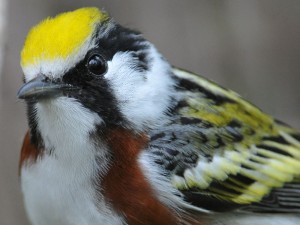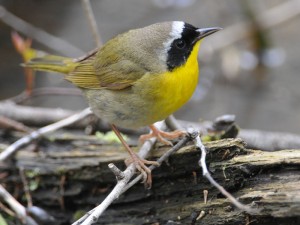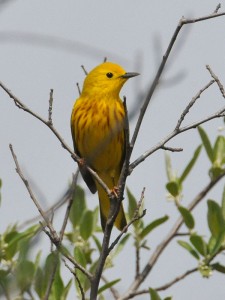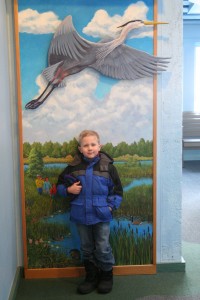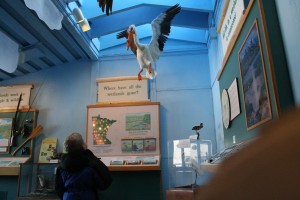Monthly Archives: January 2013
Gadwall
A New Toy for These Bird-Nerds
Have you ever anxiously awaited to get some new piece of technology, like the latest iPhone or iPad? I haven’t. I’ve never had to be on the cutting edge of technology. It just doesn’t excite me all that much. I have adapted to things like SmartBoards in school, smartphones, and now iPads for school, but it’s always been long after the technology has been around and it has usually been forced upon me. For once, though, I have sought out and purchased a new high-tech device, and I cannot wait until it arrives next week. So, what is it and how does it relate to birding? It’s Canon’s PowerShot SX50 – a camera that goes from a focal length of 24 mm to a whopping 1200 mm allowing you to have 50x zoom! That is crazy for a point-and-shoot. Now we can start putting up our  own, hopefully quality, bird photos. I was looking into telephoto lenses for our Rebel, but this was a much cheaper and more portable option. Lillian Stokes, photographer for the Stokes Field Guide to Birds of North America, gave me the tip on Canon’s affordable, super zoom cameras after she checked out the post, Couch-Potato Birding, and saw my plea for advice for photography equipment for birding.
own, hopefully quality, bird photos. I was looking into telephoto lenses for our Rebel, but this was a much cheaper and more portable option. Lillian Stokes, photographer for the Stokes Field Guide to Birds of North America, gave me the tip on Canon’s affordable, super zoom cameras after she checked out the post, Couch-Potato Birding, and saw my plea for advice for photography equipment for birding.
I am almost hoping we don’t have any more amazing birding experiences until that baby is in hand. Almost. Like, for instance:
- Having the Oregon Junco (first the female, now the male) show up in the yard yesterday
- Getting our second visit from the Hairy Woodpecker yesterday, nicknamed Harry
- Watching the Northern Shrike cover half a city block today in a relentless aerial pursuit of a Common Redpoll (Shrikes are predator birds and this was our second sighting in a week of this rare visitor)
- Seeing TWO male Northern Cardinals stop by our feeders for a meal on Friday
- Spotting two Merlins (possibly) flying low over the city of Willmar today
- Going birding from the car with The Team last Sunday evening in sub-zero, windy weather and seeing two gorgeous rooster Ring-Necked Pheasants glittering with color in the setting sun as they stood in the crisp, white snow against the golden grasses
I can’t wait to add some eye-candy to this blog. I’ve been fortunate enough to use the works of some gifted photographers for these posts, but soon you should be seeing what we see! Stay tuned.
Yellow Warbler
Dark-eyed Junco (Oregon)
Hoary Redpoll
Northern Shrike
Two Lifers in Ten Minutes
In my last post I said I was done writing about just my experiences, but I had no idea that today I would have seen two amazing lifers – new birds to add to my life list. The only way I know how to get rid of the birding adrenaline that is still coursing through my system is to write about what happened.
After I dropped Evan off at school and Marin off at daycare, I had a half hour to kill before I had to go to school for a Math League meet (my school is not in session most Mondays). I decided to watch the feeder activity since I rarely get to as I drive to work in the dark and get home late. Thanks to my wife’s efforts and some recent bird-feeding advice from local experts, our birch tree in front of our house is alive and literally moving with hundreds of birds of 11 different regular species (we’ve had 18 this fall/winter) that show up for a handout. Lately we’ve been invaded by dozens of Common Redpolls, a bird that winters here all the way from the Arctic. As I watched them attack the sunflower chips in the thistle feeder, I spotted one redpoll that was whiter/frostier than all the rest – the Hoary Redpoll. These redpolls mix in with flocks of the Commons and are very similar in appearance to them. They are rare; maybe only one or two out of a flock of 200 redpolls will be the Hoary. So, there is doubt in my mind, but I’m 95% certain I saw one.
As I was contemplating the subtle differences in redpoll species, a dark, large bird swooped down and landed on the deck right in front of the window. I went up to the window and looked down to see it. I expected a Bluejay. What I saw looked like a jay, but it was gray with black on its wings and a black mask extending behind its eyes! I had never seen such a bird. I figured I had it pegged as the Gray Jay. I was fumbling for my phone to get a picture of this cool bird just 4 feet from me when it flew off. Looking in the bird guide to confirm my identification, I found I was way off. The Gray Jay did not look like what I saw, and we are way south of its range. Flipping through the book, I found the bird that looked exactly like the one that came to see me. Unfortunately, though, there were two species that were nearly identical to each other – the Loggerhead Shrike and the Northern Shrike. Like the redpolls, they differed only subtly. I was not prepared for this encounter; I hadn’t studied enough to pick out the discerning details in that flash of a visit! It reinforced the need to study. Thankfully context saved me. Both shrikes live in Minnesota, but the Loggerhead is only here in the summer. The Northern, on the other hand, is a scarce visitor all the way from northern Canada in the winter. The Northern Shrike is a great addition to my life list, which will be coming soon.
I couldn’t believe I had seen two beautiful, rare birds from the Arctic out my living room window. I immediately called my dad to share my excitement, and then I had to wait five long hours to tell Evan. I can only hope that he, too, will someday be in the right place at the right time to experience these amazing birds.
I am hoping to find some pictures of these birds that I can use with permission for this post, but if you are curious, just do a Google image search for Hoary Redpoll or Northern Shrike.
‘Pleased to, Pleased to Meetchya!’
While the intent of this blog is to share and record the joint birding experiences of myself and Evan (and my dad too), I think I would be doing you readers (and Evan) a disservice if I did not document how I became a birder. This will be my first and last post that details just my experiences. After all, reading about Evan is what keeps many of you coming back. As I described in the About page, this pasttime originated with Evan and was encouraged by my wife and me, but I was never personally invested until I had an encounter with a special bird one day last June. That chance meeting hooked me into this sport, and now I’m “all in” and share the joy of birding with Evan.
So how could a bird possibly flip the switch for me? How could passion for a new hobby just ignite? Before I tell you, it is important for you to know something about my love of the outdoors and how that love has evolved over time. I’ve always enjoyed nature, whether that was growing up on a 10,000 acre lake in northeastern Minnesota, paddling a canoe through the Boundary Waters Canoe Area Wilderness, or traversing the hills and sage-brush country of eastern Montana in search of wild game. Growing up, our family did a lot of camping and hiking, and as I got older, my spirit for adventure grew as I found myself becoming an avid fisherman and hunter. Like many young boys who hunt, I liked to hunt anything with eyeballs at first. Eventually, though, my interests became honed. I just didn’t find excitement in pursuing deer and small game. But wingshooting fascinated me. I enjoyed the challenge of finding game birds and feeling the tremendous excitement of the fury of beating wings explode in front of me. I loved canoeing silently around bends in shallow rivers hoping for an eruption of any number of different kinds of puddle ducks. Then to have the skill to hit such a fast, unexpected target and to share the comraderie and teamwork of a good bird dog made this the perfect sport. Game birds and ducks fascinated me. I was never a numbers guy trying to fill my limit with anything that flew; rather I wanted to seek out and shoot the fascinating ones – a rooster pheasant, a drake wood duck, or a drake green-winged teal. I even did my own bird taxidermy, mounting well over a dozen birds. That got old, and as I aged my lust for game went away. I still liked to hunt, but my interests shifted. Not being able to stand the taste of duck meat, I gave up that hunting. To hunt something you do not use as sustenance is just wrong. These days my limited outings of wingshooting just involve ring-necked pheasants and ruffed grouse – birds that taste so chicken-like that even my wife will eat them. Maybe. So a couple birds all season is enough to satisfy my urge to hunt and more than enough to satisfy my craving for game meat.
But this is not a hunting blog, and I hope I haven’t chased away all my birder friends with my back story. After all, I’m just getting to the good part – a magical encounter with a special bird. So, one day last summer while staying at my dad’s 80-acre farm in northern Minnesota, I was exercising my two yellow labs, Faith and Chance, by driving around on the four-wheeler and having them chase me. What can I say? I’m lazy. As I was maneuvering the four-wheeler through a gravel pit that was surrounded by 10-15 year-old aspen trees, I heard a vibrant, cheery bird call over the revved engine of the four-wheeler. What in the world was that? I shut off the machine and listened. I heard it again, and it was close. Now I had to see what was making that fantastic song. I didn’t have to wait long because this is what I saw:
Photo Credit – Chris Thomas
It was gorgeous. Throughout my life I’ve seen a lot of pretty birds at feeders and have become quite jaded to them, but this, this was new to me! I couldn’t believe such a bird existed in the region I had been raised, and yet I’d never seen it. I raced back to the house to find my dad’s tattered bird identification book from the 1960s. The bird was unmistakable in appearance and easy to ID. It was the Chestnut-Sided Warbler. So cool. The call of the Chestnut-Sided Warbler is often quoted in bird books as sounding like, “Pleased to, pleased to meetchya!” What an appropriate greeting to someone just discovering the world of birds.
Even our sportsman, nature-loving President Teddy Roosevelt was captivated by this pleasant, little bird. His sister, Corine Roosevelt Robinson, documented the following outburst of her brother, “One winter morning the President electrified his nervous Cabinet by bursting into a meeting with, ‘Gentlemen, do you know what has happened this morning?’ They waited with bated breath as he announced, ‘Just now I saw a Chestnut-sided Warbler and this is only February.’ ” I totally get it, TR. Have a look/listen for yourself by watching the short video below.
This video was shot by Lang Elliott who runs the website The Music of Nature. Lang has been kind enough to let me put this video on my post. Thanks, Lang! Check out the website if you get a chance. It will be worth your time.
Immediately after my encounter with this warbler, the bird hunter in me was hooked. Hunting now meant something different to me, and hunting was no longer bound by state lines or dates on a calendar nor did it require a gun. This new hunting, better known as birding, also required an acute attention-to-detail, a skill I have valued and refined in my career as a math teacher. So there I was, a brand-new birder, thumbing through the bird guide, and I discovered that there’s a whole fleet of warblers – each more beautiful than the last! Then I noticed that a great number of them summer or migrate through northern Minnesota. My excitement for the sport was growing by the minute. My dad, a former wildlife biologist, has always enjoyed bids, and my son has been a bird aficionado for quite some time. Now, I, too, had got caught up in the excitement. In less than 24 hours from being warmly greeted by the feathery little creature, my dad and I were up early the next morning to go birding on his property. And these are the beauties that we found that morning. Absolutely stunning. I had no idea what lurked in the trees and bushes around me.
Common Yellowthroat – Chris Thomas
Yellow Warbler – Chris Thomas
I’m sure that I will continue to chase up grouse and pheasants with my labs in the coming years. The difference now, however, is that I’ll have a pair of binoculars in my hunting vest. I have no doubt that the pheasants and grouse will flush unharmed as I am peering through the binoculars trying to ID some bird. Based on my shooting ability, they’ll be safe regardless.
The photos of the Chestnut-Sided Warbler, the Common Yellowthroat, and the Yellow Warbler are courtesy of Chris Thomas Bird Photography. Chris has generously given me permission to use these pictures to enhance this post. Thanks, Chris!
If you’re a hunter, check out my previous post titled Rooster!
If you want to read more about an experience with another fantastic warbler, check out the post titled A Glowing Flame in the Treetops.
An Outing to Sibley State Park
 Today Evan and I fed our birding habit by attending a bird feeding seminar at nearby Sibley State Park. Since there aren’t as many species around in the winter as there are in the summer and since it’s hard to get out birding, we thought it would be a good idea to take in this seminar to see what we could do to enhance our birdwatching from the comfort of our own home. The great thing about Minnesota’s state parks is that they have all kinds of programs througout the year. All of these activities are placed on one calendar at the DNR’s website. (Click here to access it.) The cool thing about this calendar is that Evan and I can see what birding programs are offered at any of our Minnesota’s 67 state parks.
Today Evan and I fed our birding habit by attending a bird feeding seminar at nearby Sibley State Park. Since there aren’t as many species around in the winter as there are in the summer and since it’s hard to get out birding, we thought it would be a good idea to take in this seminar to see what we could do to enhance our birdwatching from the comfort of our own home. The great thing about Minnesota’s state parks is that they have all kinds of programs througout the year. All of these activities are placed on one calendar at the DNR’s website. (Click here to access it.) The cool thing about this calendar is that Evan and I can see what birding programs are offered at any of our Minnesota’s 67 state parks.
Sibley State Park was alive and well today as people took advantage of this beautiful, sunny day by skiing, sledding, or staying in one of the park’s camper-cabins. Not many people, however, attended the bird-feeding seminar at the park’s interpretive center. It was Evan and me and one other family group. That was fine with us. The park naturalist, Dick, gave about an hour long presentation on winter birds, their habits, and how best to feed them. At the beginning of his slideshow he would put a bird picture on the screen and ask if anyone knew the name. Of course we knew them, but Evan can be quite shy and therefore wasn’t answering Dick. After a nudge or two from his dad, he finally started identifying every bird correctly. Later on I was visiting with Dick who commented on how remarkable it was that someone Evan’s age knew so many bird species. He told me most adults he runs into can’t identify birds that they see.
Rather than giving you a complete summary of Dick’s talk, I thought I’d share with you my exit slip from his talk. In the education world, an exit slip is a person’s own take-aways from a lesson. It contains the information the student found most important.
- Minnesota has 400+ bird species; 206 have been found at Sibley
- Only 44 bird species show up at feeders in MN in the winter; only 12-15 show up in our area (That’s a bummer because I think we’ve had them all already and can’t really expect many new ones, but at the same time it’s cool that we are seeing all that we can.)
- Bird feeders should be placed on the south or east side of your house
- Black-oiled sunflower seeds are the only kind of seed you really need, though some species do like milo, cracked corn, and thistle
- There are more thistle-feeding birds in the winter than in the summer (Goldfinches stick around, though they are more greenish than bright yellow)
- Birds are attracted to water, and there are plug-in, winter water features available for purchase (we will probably buy one this week)
- All four niches of bird feeders should be used to maximize your birdwatching experience: tabletop feeders, hanging feeders (suet and thistle), tree-trunk suet feeders, and seeds on the ground

